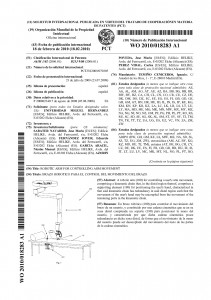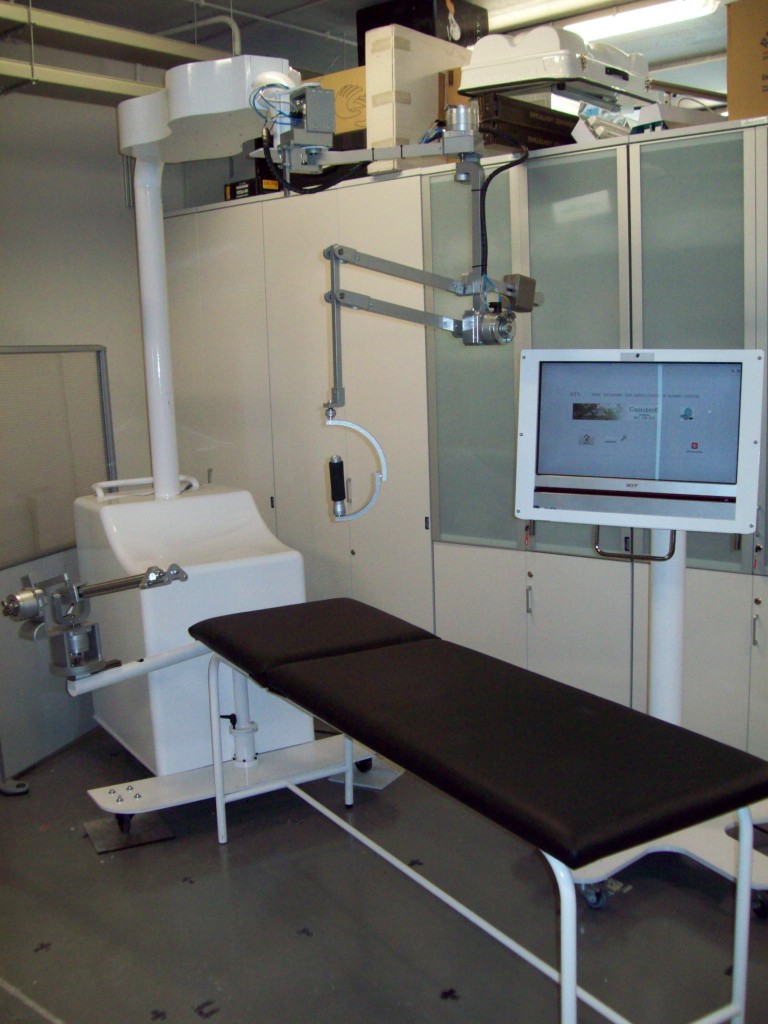 The present invention relates to a robotic arm and a method of using this robotic arm. The present invention more specifically relates to a robotic arm which can be used in upper limb training.
The present invention relates to a robotic arm and a method of using this robotic arm. The present invention more specifically relates to a robotic arm which can be used in upper limb training.
 La presente invención se refiere a la invención de un sistema robótico para la ayuda en los procesos de rehabilitación de miembros superiores. El sistema está formado por dos brazos robóticos, uno para el movimiento del antebrazo y otro para el movimiento de la mano del paciente, y por un sistema software de realidad virtual destinado a facilitar la integración del sistema robótico en el proceso de rehabilitación. Los dos brazos robóticos están basados en actuación con músculos artificiales, constituyendo esto una innovación frente a otros sistemas anteriores.
La presente invención se refiere a la invención de un sistema robótico para la ayuda en los procesos de rehabilitación de miembros superiores. El sistema está formado por dos brazos robóticos, uno para el movimiento del antebrazo y otro para el movimiento de la mano del paciente, y por un sistema software de realidad virtual destinado a facilitar la integración del sistema robótico en el proceso de rehabilitación. Los dos brazos robóticos están basados en actuación con músculos artificiales, constituyendo esto una innovación frente a otros sistemas anteriores.

In upper limb training, a patient or user trains his or her arms to improve or regain control over them. It is especially used for patient’s suffering from a partial paralysis. A partial paralysis may be caused by any of a number of common causes: multiple sclerosis, a tumour or an accident. The most common cause of partial paralysis however is a stroke. Patients suffering from partial paralysis may benefit from upper limb training in which a physiotherapist may subject a patient’s arm repeatedly to a certain movement. Various treatment methods exist. Proprioceptive Neuromuscular Facilitation (PNF) is one of these methods and aims at stimulating a patient’s proprioreceptors. It is possible for a patient to retrain their brain to perform certain movements and in this way regain some functional control over their arms. This therapy has the best results only when the movement of the arm is repeated at least twice a day for 45 minutes during a month. It is not always possible to give each patient this care during such an extended period.
El sistema es capaz de reproducir los movimientos del fisioterapeuta durante la realización del método de facilitación neuromuscular propioceptiva (FPN), incluyendo los movimientos flexores o extensores de los dedos de la mano, constituyendo esto último otra novedad respecto a otros sistemas.
El sistema puede realizar diferentes modos de trabajo, entre los que se incluyen los movimientos activos libres, movimientos activo asistidos, movimiento activo resistivo y movimiento pasivo. Esta capacidad constituye una diferenciación frente a otros sistemas de ayuda a la rehabilitación.
El sistema es capaz de trabajar en el espacio de fuerzas efectuadas por el fisioterapeuta, en lugar de ser un sistema de posicionamiento rígido. Esta característica es una novedad en los sistemas de rehabilitación de miembros superiores, y supone una ventaja desde el punto de vista de la seguridad y comodidad del paciente durante las sesiones de rehabilitación.



